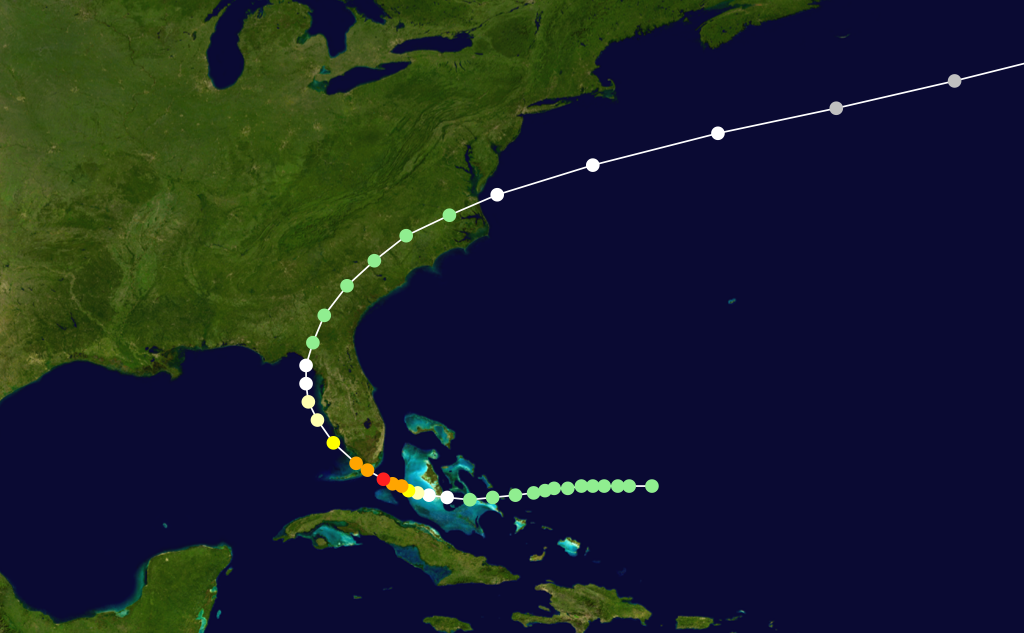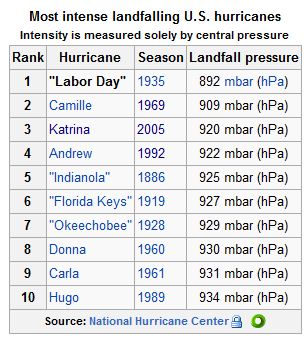The Labor Day, 1935 hurricane was the most intense hurricane to ever make landfall in the US. It came on shore with an unbelievably low atmospheric pressure of 892 mbar (Katrina was 920 mbar.)
[youtube=http://www.youtube.com/watch?v=x1lSVcYM2WE]
http://en.wikipedia.org/wiki/1935_Labor_Day_hurricane
Atmospheric CO2 was 309 ppm at the time. If this same hurricane occurred today, it would absolutely, positively be blamed on CO2 and “global warming.”




So soon after Katrina? You bet it would!
[Reply : It occurred only seven years after the Okeechobee hurricane, which was nearly as intense as Katrina]
Neven,
you really need to get other things going in your life. You have tunnel vision. Hurricanes have decreased in frequency of the past few decades. They have not increased in frequency.
It was a reaction to Steven’s “If this same hurricane occurred today, it would absolutely, positively be blamed on CO2 and “global warming”. I didn’t say hurricane activity has increased.
Will this be Gaston in 10 days? Models and their inherent abilities and weaknesses notwithstanding, it remains to be seen.
http://www.nco.ncep.noaa.gov/pmb/nwprod/analysis/carib/gfs/12/images/gfs_ten_240l.gif
My first question was – what was Camille? Answered before I could write it.
Camille not only devastated the Gulf coasts, it also stalled over Virginia, dropping 25 inches of rain overnight and killing over 1% of the population of Nelson County.
It may not have had the milibars of the labor day hurricane, but it struck a lot closer to home for me.